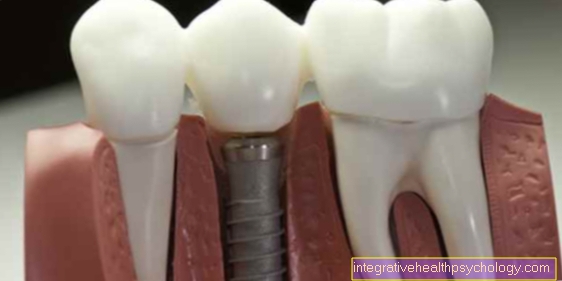Yellow diarrhea
introduction
Yellow diarrhea is changes in bowel movements. Diarrhea is a bowel movement that is associated with an increased frequency (at least three times a day) and / or an increased proportion of water (at least 75%) and thus a particularly fluid consistency. The diarrhea can also lead to increased stool weight. In addition, the stool becomes yellow in color. In addition, the stool may have a different smell. This synopsis of consistency, frequency, color and smell can already provide initial diagnostic information.

What are the causes of yellow diarrhea?
The following causes can be considered for yellow diarrhea:
-
infection
-
Gastrointestinal infection
-
Bacterial disease
-
Viral disease
-
Rarely parasites, fungal infections, etc.
-
-
Medication
-
Antibiotics
-
-
Organ diseases
-
Bowel disease
-
Chronically inflammatory
-
tumorous
-
-
Liver disease
-
Gallbladder disease
-
Kidney disease
-
-
food
-
intolerance
-
Intake of foods with a particularly high amount of yellow coloring
-
Food gone bad
-
Yellow diarrhea after taking antibiotics
Antibiotics are drugs that are effective against a wide variety of bacterial pathogens. There are usually many bacteria in the gastrointestinal tract that are a natural part of digestion in the human body. By taking antibiotics, not only disease-causing bacteria (such as tonsillitis, pneumonia or cystitis) are attacked by the drug. Instead, the natural intestinal flora also suffers from the antibiotic.
Depending on the type of antibiotic, different bacteria in the intestine are killed, which leads to an imbalance in the digestive bacteria in the intestine. This alone can trigger changes in bowel movements - especially diarrhea - and also lead to the diarrhea turning yellow. The bacterial imbalance can often lead to a multiplication of disease-causing bacteria in the intestine, which can lead to a gastrointestinal infection with symptoms such as yellow diarrhea after antibiotics.
Read more on the subject at: Side effects of antibiotics
Yellow diarrhea after an operation on the gallbladder
Bile plays an important role both in digestion and in the metabolism of breakdown components in the blood. Bile operations can (temporarily) lead to a shortage of bile acids. Since the bile acids are required for the digestion of fatty foods, there may be a reduced intake of these foods after the biliary surgery. This can result in yellowish, light-colored, particularly fatty stools. The lack of bile acids also leads to disturbances in the breakdown of blood components, which can cause them to accumulate in the intestine. This can cause the yellowish hue of the diarrhea.
Read more on the subject at: Defecation after biliary surgery
Yellow diarrhea in liver disease
Liver diseases bring many metabolic disorders with them in their advanced stages. This often leads to changes in bowel movements. In liver diseases such as cirrhosis of the liver, jaundice typically occurs, which is a yellowing of the skin. This yellow dye, which is deposited in the skin, can also get into the intestines and turn the stool yellow there. The disturbed formation of many digestive enzymes can also change the composition of the stool, which can lead to diarrhea.
Can yellow stools be indicative of cancer?
In principle, yellow diarrhea can be an indication of cancer, among many other causes. For example, if you have yellow diarrhea that cannot be explained by other causes, you should think of colon cancer. Above all, this can affect the consistency of the stool and lead to increased diarrhea. However, liver cancer or a cancer of the gallbladder and ducts can also make themselves felt in the form of yellow diarrhea. With cancer, additional symptoms such as significant weight loss, pronounced night sweats and recurring fever (so-called B symptoms) usually occur.
How is yellow diarrhea diagnosed?
In the case of yellow diarrhea, a suspected diagnosis should first be made using the anamnesis (questioning of the person concerned by a doctor). Many possible causes of the complaints can be excluded. This is followed by a physical examination of the abdomen (listening, palpation). Depending on the suspected cause of the yellow diarrhea, imaging procedures (ultrasound, X-rays, MRI, CT) can then be performed. A blood sample is often also carried out, which can provide information on signs of inflammation or certain organ diseases. If no clear cause can be determined, an endoscopy (examination of the gastrointestinal tract with a small camera) is usually carried out.
What symptoms indicate abnormal yellow diarrhea?
Yellow diarrhea is initially - if it only occurs for a short time - not necessarily a sign of illness. You should therefore first check whether there is an explanation for the change in bowel movements (certain eating habits, taking medication such as antibiotics). If there is no such explanation, the probability increases that the yellow diarrhea is pathological. In addition, you can orientate yourself on the duration and severity of the complaints. The longer the diarrhea lasts and the more frequent and fluid the bowel movement, the more likely it is to speak of pathological yellow diarrhea.
In addition, other symptoms such as nausea, vomiting, loss of appetite, abdominal pain, headache and body aches, etc. can occur. Fever, as an accompanying symptom, can also be an indication of a disease of the gastrointestinal tract. One should be particularly careful if dark, light red or slimy red deposits appear on the stool. These changes can indicate bleeding from the digestive tract and should be diagnosed as soon as possible. Read more about this at: Blood in the stool with diarrhea
Yellow diarrhea with a build up of mucus
Mucus is a common symptom of diarrhea. First of all, the mucus has to be divided into bloody and bloodless mucus. Bloody mucus (light red bloody or dark red to black in color) can be an indication of bleeding and should be clarified by a doctor. Bloodless (usually colorless or yellowish) mucus can be caused by impaired digestion. However, depending on the previously consumed food, the constituents of the food can also cause the yellow diarrhea with phlegm.
Read more on the subject at: Slimy bowel movements
Watery yellow diarrhea
Watery yellow diarrhea is associated with a particularly liquid consistency. In addition, the watery part of the diarrhea can often be difficult to hold back, which can lead to constant urge to defecate. Watery diarrhea often suggests an infection of the gastrointestinal tract. An infestation with viruses or bacteria also damages the individual cells of the intestinal wall. This can lead to an increased leakage of water into the upper intestinal tract and to a reduced water reabsorption (re-absorption of water) in the rear sections of the intestine, which explains the particularly watery consistency of the yellow diarrhea.
Read more on the subject at: Bowel movements like water
Yellow diarrhea and gas
Flatulence is not uncommon for changes in bowel movements such as yellow diarrhea. The flatulence is due to the increased production of intestinal gases. These are usually produced by bacteria in the gut. The flatulence can be caused both by pathological bacteria (for example in gastrointestinal infections) and by actually healthy, naturally occurring bacteria. The normal intestinal flora can be influenced by various processes such as drug side effects or certain foods, so that more intestinal gases are produced.
Read more on the subject at: Flatulence
Yellow diarrhea and abdominal pain
Abdominal pain is a common symptom of yellow diarrhea. The abdominal pain is mostly localized either in the stomach or in certain areas of the intestine. Abdominal pain can be triggered by different mechanisms. For example, flatulence is often associated with bulging pain. Colon cramps, which often occur with changes in bowel movements such as yellow diarrhea, can also manifest as abdominal pain.
Read more on the subject at: Abdominal pain and diarrhea
Yellow diarrhea and nausea
Nausea is a symptom that is particularly triggered by the upper parts of the gastrointestinal tract. An irritated stomach in particular can cause nausea and possibly vomiting. The stomach can, for example, be irritated by certain drugs, foods or pathogens. Even spoiled food can cause severe nausea and yellow bowel movements. Diseases of various organs that are involved in the metabolism (especially the liver) trigger nausea. The mechanism is based primarily on an imbalance in the metabolic processes and thus a lack of certain substances on the one hand and an excess of other substances on the other.
Yellow diarrhea and back pain
Back pain associated with yellow diarrhea can indicate discomfort in the bowel. The body cannot name the exact location of the discomfort and pain, which is why the brain occasionally interprets the pain in the back area (anatomically very close to the dam). Also one Spasm of the back muscles due to intestinal and abdominal cramps, the back pain can cause. Another cause of the symptoms can be kidney disease, which is accompanied by back and flank pain and can manifest itself in the gastrointestinal tract as yellow diarrhea.
When should yellow diarrhea be treated?
Yellow diarrhea can require treatment for a number of reasons. Often the diarrhea leads to increased fluid loss. This can lead to dehydration. Treatment with sufficient fluids is therefore necessary. This can be compensated for by increasing the amount of fluid you drink if you lose less fluid. If you are severely dehydrated, an infusion may be necessary.
Depending on the underlying cause of the yellow diarrhea, a causal treatment may also be necessary. This is the case, for example, with inflammatory bowel disease.Yellow diarrhea that is accompanied by blood deposits should also be diagnosed and treated if necessary. Mere treatment of the blood loss is often not sufficient; instead, the injured piece of intestine must also be treated. If necessary, accompanying symptoms such as fever, headache and body aches as well as fatigue and poor performance should also be treated.
Yellow diarrhea in the baby
In babies, slight color changes and differences in the consistency of the bowel movements are not uncommon. By feeding on breast milk, bowel movements are more fluid than in older children. This can give the impression that it is diarrhea instead of normal bowel movements. The yellowish color is also not uncommon in breast milk nutrition. Instead, a dark or greenish discoloration of the stool in babies is more unusual. However, if other symptoms such as abdominal pain and fever occur at the same time as the yellow diarrhea, the symptoms can also indicate a gastrointestinal infection in the baby.
Read more on the subject at: Diarrhea in the baby
Yellow diarrhea in the toddler
In children, bowel movements are usually similar in color and consistency to adults. In contrast to babies and toddlers, the diet of children is the same as that of adults, which is why their bowel movements are comparable to that of healthy adults. Therefore, yellow diarrhea in children is usually a sign of infection or other irritation of the gastrointestinal tract. The causes are comparable to the disease triggers in adults. Especially with children, you should also clarify whether a food intolerance is a possible cause of yellow diarrhea.
How long does yellow diarrhea last?
How long the yellow diarrhea lasts depends on the cause of the changes in bowel movements. Gastrointestinal infections usually subside after a few days. Likewise, the stool, which occurs as a side effect of a drug, returns to normal after a few days. Chronic illnesses, on the other hand, can lead to persistent or recurring yellow diarrhea. In the case of food intolerance, the symptoms usually last for a lifetime, but they can be completely avoided by avoiding the triggering foods.
Recommendations from the editorial team
Further general information may also be of interest to you:
- Gastrointestinal infection
- Fat stool
- Liver disease





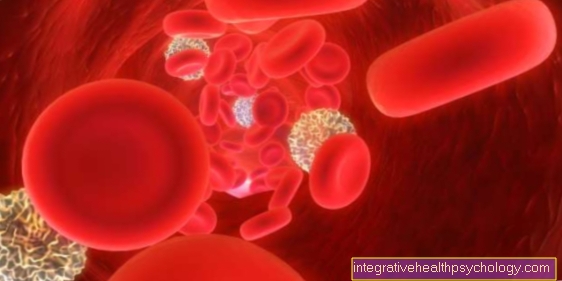



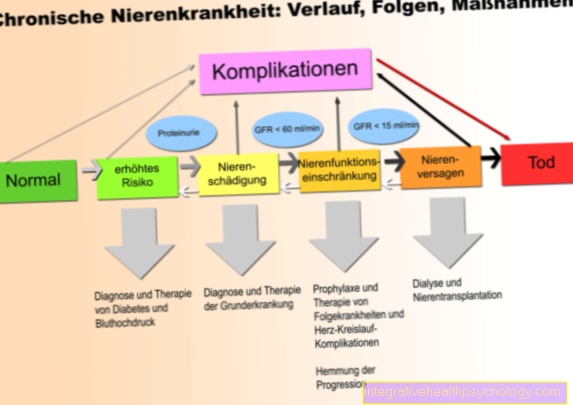
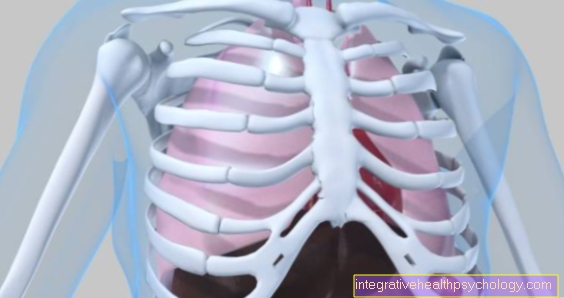
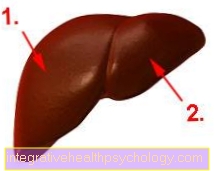
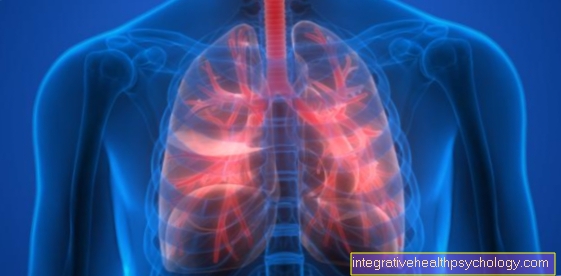
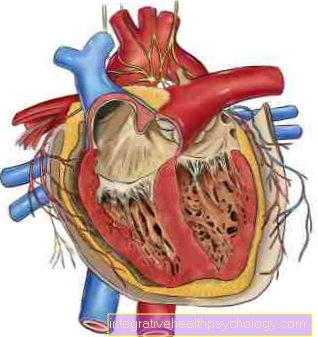
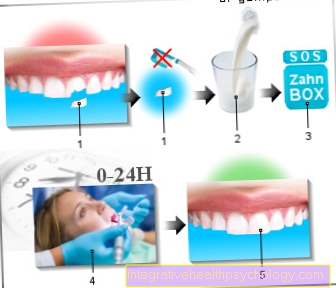





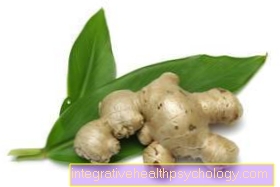

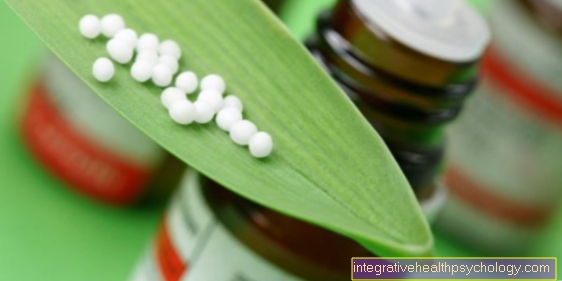

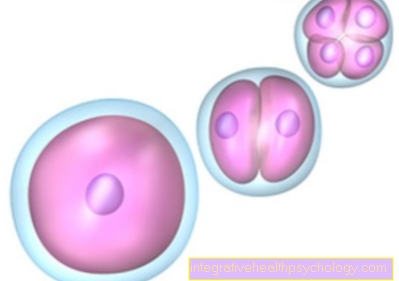

.jpg)
